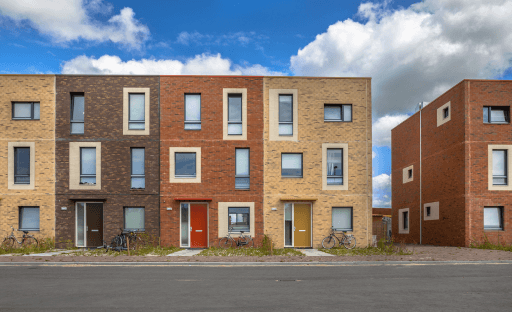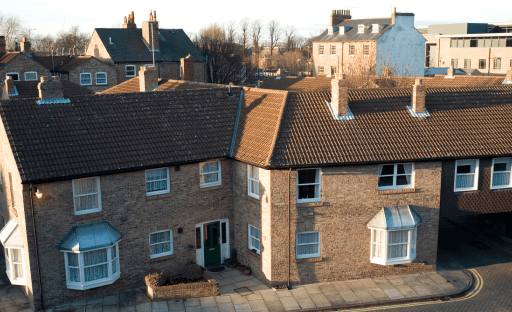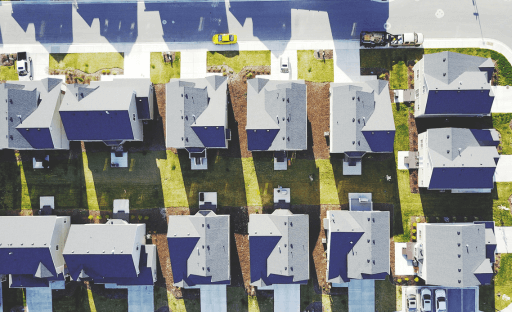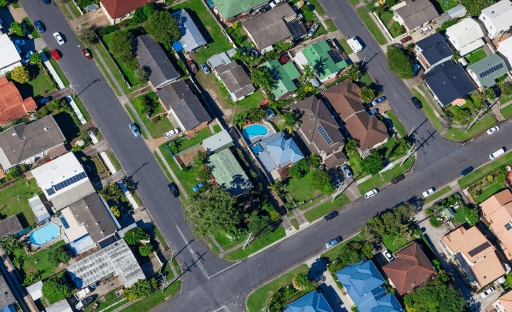Difference between social housing and affordable housing
As the cost of living continues to rise, more and more people are turning to social and affordable housing solutions. But what is the difference between these two types of housing? In this blog article, we will explore the pros and cons of both social and affordable housing solutions, explain how to choose between them, as well as discuss distinctions in accessibility for each type. By understanding these differences you can make an informed decision about which option is best for your needs.
When it comes to housing, there are two terms that often get confused: social housing and affordable housing. Although both are related to providing people with access to safe and secure homes, they differ in important ways. Understanding the difference between these two types of housing is essential for those looking for a place to live or considering investing in property.
Social housing refers specifically to rental properties owned by local authorities or non-profit organisations such as charities or trusts. These properties may be available at below-market rates, but priority is usually given based on need rather than affordability alone – meaning that applicants must meet certain criteria before being considered eligible for tenancy.
Affordable Housing, on the other hand, is typically provided through private developers who receive subsidies from government agencies in order to offer lower rents than what would otherwise be charged on the open market. This type of accommodation can also come with additional benefits such as reduced deposits and longer tenancies; however, eligibility requirements tend not to focus solely on income level but also take into account factors like age and family size when determining who qualifies for this type of accommodation.
The main difference between social and affordable housing lies in their respective target audiences: while social houses are aimed primarily at those facing financial hardship due to poverty or disability; affordable homes provide more accessible options for low-income earners who may not qualify under traditional criteria set out by local councils. Furthermore, unlike social dwellings which require tenants to pay rent directly, most affordable units have their payments covered by government programs such as Section 8 vouchers.
In conclusion, understanding the distinction between these two types of residential accommodations can help potential renters identify which option best suits their needs while investors gain insight into how each form of the property could benefit them financially over time.
What is the Difference between Social and Affordable Housing?

Social and affordable housing are two terms that are often used interchangeably, but they have distinct meanings. Social housing refers to rental accommodation provided by the government or a non-profit organization at below-market rates for people who cannot afford to rent in the private sector. Affordable housing, on the other hand, is typically developed by private developers with subsidies from local governments and/or philanthropic organizations. It is available at below-market rents for households earning up to 80% of their area’s median income level.
The primary difference between social and affordable housing lies in their respective target populations: social housing focuses on those most in need while affordable housing provides more moderate assistance for low-income families who may not qualify for traditional social programs but still struggle to make ends meet due to high costs of living relative to wages earned.
Social Housing generally has stricter eligibility criteria than Affordable Housing as it targets those most vulnerable such as single parents, seniors or disabled individuals; whereas Affordable Housing can be accessed by a wider range of incomes including working families with children whose household income falls within certain thresholds set out by each state’s program guidelines. Additionally, Social Housing usually offers longer tenancies than what would be found through an Affordable Rental Program which typically allows tenants shorter leases (e.g., 1 year) with periodic reviews based on changes in family size or financial circumstances over time.
Exploring the Pros and Cons of Social vs Affordable Housing Solutions

When it comes to finding housing solutions, there are two main options: social and affordable housing. Both have their own advantages and disadvantages that should be considered before making a decision.
Social housing is typically provided by the government or non-profit organizations for those who cannot afford market-rate rents. This type of housing usually has lower rent costs than other types of rental units but may come with restrictions such as income limits or time limits on how long you can stay in the unit. The benefit of this type of housing is that it provides access to safe and secure living spaces for people who would otherwise not be able to find them in the private market. However, these units often lack amenities like laundry facilities or air conditioning which can make them uncomfortable places to live in during the hot summer months.
Affordable housing refers to rental units whose rents are set at levels below what most people could pay without assistance from either public funds or subsidies from employers or landlords themselves. These types of rentals tend to offer more amenities than social housing such as laundry facilities, air conditioning, etc., but they also come with higher rent costs than social housings do due to their location near desirable areas like downtowns and close proximity services like shopping centres. Additionally, some affordable rentals require tenants to meet certain criteria such as having a minimum credit score before being approved for tenancy.
Ultimately, when deciding between social vs affordable housing solutions, one must consider both pros and cons associated with each option carefully before making a decision.
How to Choose Between Social and Affordable Housing Options

Choosing between social and affordable housing options can be a difficult decision. It is important to understand the differences between the two types of housing before making a choice. Social housing is provided by government or non-profit organizations, while affordable housing is typically offered through private developers or landlords.
Social housing offers lower rents than the market rate and often includes services such as meals, laundry facilities, recreational activities and other support services for tenants in need. Affordable housing also provides lower rent than the market rate but does not usually include additional services like those found in social housing programs.
When considering which type of accommodation to choose it’s important to consider your individual needs and circumstances as well as the availability of each option in your area. If you are looking for long-term stability then social housing may be more suitable due to its secure tenancy agreements that provide protection from eviction without a good cause being given by the landlord or provider organization. On the other hand, if you are looking for flexibility then an affordable rental option may suit you better since there are no fixed terms on these tenancies so they can be ended with shorter notice periods when required.
It’s also worth noting that both types of accommodation come with certain eligibility criteria which must be met before applications can even be considered, so make sure you check this out thoroughly beforehand. Ultimately, it’s up to you to decide what kind of accommodation best suits your needs – whether it’s social or affordable – but understanding all available options will help ensure that whatever decision you make will work best for yourself now and into the future too.
Social Housing vs. Affordable Housing: Exploring Definition

The difference between social housing and affordable housing lies in their distinct definition and purposes. Social housing, also known as council housing or social rented housing, consists of properties managed by local authorities and housing associations. These properties are usually built as blocks of flats and are offered at social rent, which is significantly lower than market rent. Social housing rents allowed people to work without being dependent upon housing benefits.
Affordable housing, on the other hand, encompasses a broader range of housing options, including social rented housing, affordable rent properties, and private rental properties. Housing affordability is determined by whether the rent or mortgage is affordable for households with low to moderate incomes. Although affordable housing is social in nature, it is not limited to housing provided by local authorities or housing associations.
Diverse Housing Options: Addressing Community Needs

Housing social research emphasizes the importance of providing a variety of housing options to cater to the diverse needs of community members. With a range of choices, including social rented housing, affordable rented housing, and shared ownership schemes, individuals and families can find suitable homes that meet their specific requirements.
Social rented housing is managed by local authorities and housing associations, offering lower rents than those typically found in the private rental market. This type of housing is designed to accommodate individuals and families who may struggle to afford housing without assistance. Housing benefit often covers part or all of the rent in these cases, ensuring a stable and secure living situation.
Shared ownership is another option for those who may not be able to afford full home ownership. Through this scheme, individuals can purchase a share of a property, usually between 25% and 75%, while paying rent on the remaining share. This enables them to have a stake in their homes, even if they cannot afford to buy the entire property outright. Shared ownership appeals to various community members, including first-time buyers, young professionals, and families.
Local authorities and housing providers gather data on housing needs within their communities and plan for an appropriate supply of social and affordable housing options. This data-driven approach, informed by community feedback, ensures that resources are allocated effectively to address pressing housing concerns.
To apply for social rented or affordable housing, individuals must meet specific eligibility criteria and provide details about their financial and personal circumstances. This information helps housing providers prioritize applicants and allocate resources fairly. Community members can also report issues or concerns related to housing provision, ensuring that local authorities and housing providers maintain a clear view of the housing landscape and respond to changing needs.
Guardian of Rental Properties
In both social and affordable housing sectors, there are guardians responsible for managing rented properties. For social housing, local authorities and housing associations act as guardians, ensuring that the properties are well-maintained and allocated fairly. In the affordable rented sector, private landlords and housing providers manage properties, offering them at rents below market rates to increase housing accessibility.
Local Supply and Planning

The local supply of social and affordable housing plays a crucial role in addressing housing needs in communities. Planning authorities work together with housing providers to ensure an adequate supply of both social and affordable housing options. This collaboration helps to create balanced communities and offers a wider range of housing choices for residents.
Understanding the Distinctions in Accessibility for Social vs Affordable Housing

Understanding the differences between social and affordable housing is essential for those looking to secure a place to live. Social housing is provided by government-funded organizations, while affordable housing is usually offered through private developers or landlords.
Social housing provides long-term accommodation for people who are unable to access traditional forms of rental due to their financial circumstances. It typically offers lower rents than market rates, with priority given to those in greatest need such as the elderly, disabled or homeless individuals and families. The availability of social housing varies from country to country but it generally requires applicants to meet certain criteria before they can be considered eligible for this type of accommodation.
Affordable Housing on the other hand refers more broadly to any form of rental that costs less than what would normally be charged in an area’s open market rate; however, there are no specific eligibility requirements attached like there are with social housing schemes. Affordable Housing may include privately owned homes rented out at discounted prices or publicly funded initiatives such as rent subsidies which help tenants pay their rent each month without having them bear all the cost burden themselves.
What is another term for affordable housing?
Another term for affordable housing is “low-cost housing,” which refers to housing options that are financially accessible for low to moderate-income individuals and families.
Which country has the best social housing?
While it is difficult to determine the best country for social housing, the Netherlands is often praised for its extensive and well-managed social housing system.






